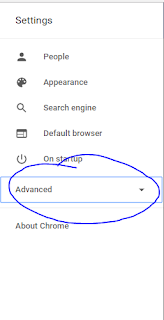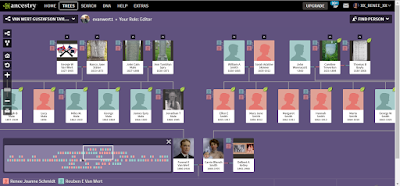It's been many months since I first decided that I wanted to manually transfer my sources from Ancestry.com to my genealogy program of choice, Legacy family tree. When I first started my transferring, Family Tree Maker was still actively supporting transfers of information from Ancestry.com to their program and now RootsMagic has introduced support. Yet, I still decided to manually transfer. There were quite a few reasons for my decision to manually reenter the information, but I'll just list the main ones:
- Ancestry.com has abysmal sources for a lot of their documents in my opinion. In most cases the only halfway decent ones are censuses, and oftentimes I will find the auto-sourcing they do has incorrect values for fields like page numbers.
- I want everything in my local tree to be as accurate as possible. When I first started working on my tree I was, let's face it, not especially concerned with accuracy. By going through each record individually I can check each record individually.
- I can save source images to my local file. These aren't for anything other than my own personal reference, as it is not at all legal or encouraged to distribute these images (they are the property of ancestry), but if I ever need to cancel my subscription I can still glean information from them.
- My tree on ancestry is not mine. I collaborate on it with my great uncle Van Wert (who did extensive work even before records were available online!). So even if I wanted to I wouldn't be able to download everything (which worked out for me in the end).
- Name recognition. When you force yourself to really read the records, you will begin to see the same names over and over. Name recognition has been crucial for me in finding immigrant ancestors, as its not abnormal for the names you see over and over to be family from overseas.
So, now that you know my reasons for manually entering my sources, I will share my process, which I have finely tuned to ensure full transfer of all records in the fastest way possible.
Make a Spreadsheet of Ancestors
As I personally use excel, that is the program I will show this step in. However, this could be modified for any spreadsheet program you like to use, such as google sheets.
I started out with a spreadsheet of only my direct line ancestors. Because of the number of records I have to transfer, I am still on this particular spreadsheet. It's important to note that I only use this spreadsheet for records directly from Ancestry.com. I have a separate spreadsheet for the media people post on ancestry, my reasoning being that before downloading pictures of people I should contact the person who posted said picture and get the full citation information, which is a slower process and not as linear.
The spreadsheet itself is pretty basic with as few fields as possible. I have one header called "Relationship" and one called "Name".
 |
| My Ancestor Spreadsheet |
 |
| The end of the 4th Great Grandparents section of my spreadsheet |
Downloading Images From Ancestry
Now downloading an image is pretty self-explanatory. You just click the download button on the record image. However, unless you have modified your settings all the pictures will go to the same place (your downloads folder) without letting you name them until its already been downloaded. You can change this setting, however, and I recommend you do as you will find the process of downloading, naming, and moving is much faster. I'll will explain what you need to do in chrome, but you can look up the specific instructions for any browser you may wish to use.
In chrome, navigate to the top right-hand corner of the screen. You will see 3 dots stacked one on top of the other. Click these, then click on settings when the menu pops up.
 |
| Both the button with the 3 stacked dots and the settings button are circled |
You should now find yourself in chrome settings. In the top left-hand corner of the screen, you will see 3 lines stacked one on top of the other. Click this and you will see a side menu appear. In this menu click 'Advanced'.
 |
| Click the Advanced settings button |
In this advanced menu click on 'Downloads'.
 |
| The downloads button |
 |
| The 'Ask where to save each file before downloading' switch |
Make Use of Shared Events
Why enter an event multiple times if you don't have to? Legacy has a nice feature called shared events. To use it, navigate to the person you want to add the event to (for censuses I usually add it to the head of the household, for nearly all others I add it to the main person featured in the event) and add the event as you normally would. Then double-click on the shared event space in between the event descriptor and the event source fields.
| The shared event field |
You will be taken to a screen where you will be able to add people who share the event as well as assign roles to them, such as wife, daughter, and son.
 |
| Choose people to share the event with |
Final Thoughts
Well, that's pretty much it. Hopefully, this helped you in some way increase the speed at which you can enter sources into your genealogy program of choice. The best part of spending less time on data entry is having more time to spend on analysis and writing!
Do you have any tips for increasing workflow speed? If so I'd love to hear them in the comments!

Thanks so much for sharing your tried and true way of doing this!!!
ReplyDeletethanks for sharing - I have wondered how people work in both Ancestry and Legacy (my software of choice). Wonder how people keep their research straight when they are working in both an online program and an offline program.
ReplyDeleteYour blog had great info, but why do you use "sources" as a word for individuals? I "source" my findings in my Legacy Family Tree, and get a little confused by your terminology. Thanks for your description of keeping track of information from Ancestry.
ReplyDeleteThank you for reading! I definitely see what you are saying and will try to figure out some less ambiguous terminology to use in the future to avoid confusion. In this case I don't use the term "Individuals" because I feel it implies the tutorial is about transferring names and dates into your program when its not. I believe the confusion here stems from the fact that "source" can be used as both a noun and a verb. In this case, I use it as a noun meaning "a firsthand document or primary reference work" while you are using it as a verb meaning "to specify the source of (something, such as quoted material)". I personally use the word "cite" as opposed "source" to describe the act of attributing my sources to points of origin, so I hadn't really thought of the double meaning of the word before!
Delete